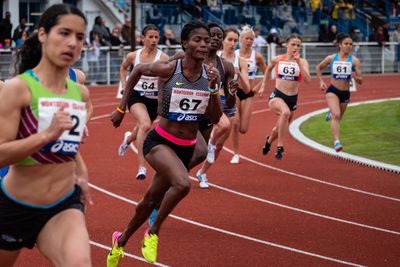Analgesic Medication and Exercise: Difference between revisions
No edit summary |
No edit summary |
||
| (10 intermediate revisions by 2 users not shown) | |||
| Line 1: | Line 1: | ||
<div class="editorbox"> '''Original Editor '''- [[User:Lucindahampton|Lucinda hampton]] '''Top Contributors''' - {{Special:Contributors/{{FULLPAGENAME}}}}</div> | |||
= '''Introduction''' = | = '''Introduction''' = | ||
[[File:Pain med.jpeg|right|frameless]]Analgesics are widely used in sport to treat pain and inflammation associated with injury. However, there is growing evidence that some athletes might be taking these substances in an attempt to enhance performance. While the pharmacological action of analgesics and their use in treating pain with and without anti-inflammatory effect is well established, their effect on sport performance is debated | [[File:Pain med.jpeg|right|frameless]]Analgesics are widely used in sport to treat [[Pain Medications|pain]] and [[Inflammation Acute and Chronic|inflammation]] associated with injury. However, there is growing evidence that some athletes might be taking these substances in an attempt to [[Effects of Performance Enhancing Drugs|enhance performance]]. While the pharmacological action of analgesics and their use in treating pain with and without anti-inflammatory effect is well established, their effect on sport performance is debated. | ||
== Effects on Performance == | |||
* Acetaminophen (paracetamol) has been suggested to improve endurance and repeated sprint exercise performance by reducing the activation of [[Cerebrum|higher brain structures]] involved in pain and cognitive/affective processing. | |||
* Non-steroidal anti-inflammatory drugs ([[NSAIDs in the Management of Rheumatoid Arthritis|NSAIDs]]) affect both central and peripheral body systems, but investigation on their ergogenic (ie enhances physical performance) effect on muscle strength development have provided equivocal results. | |||
* The therapeutic use of [[Corticosteroid Medication|glucocorticoid]]<nowiki/>s is undoubtable and clear evidence exists for a performance enhancing effect following short-term oral administration. | |||
* There is a paucity of research on the use [[Opioids|opioid]]<nowiki/>s such as tramadol on sporting performance | |||
Based on the evidence the ergogenic benefit of analgesics may warrant further consideration by regulatory bodies <ref>Holgado D, Hopker J, Sanabria D, Zabala M. Analgesics and sport performance: beyond the pain-modulating effects. PM&R. 2018 Jan 1;10(1):72-82. Available from: https://www.researchgate.net/profile/Darias-Holgado/publication/318722082_Analgesics_and_Sport_Performance_Beyond_the_Pain_Modulating_Effects/links/5c18013ca6fdcc494ffc5d80/Analgesics-and-Sport-Performance-Beyond-the-Pain-Modulating-Effects.pdf?origin=publication_detail (accessed 20.3.2021)</ref>. NSAIDs and paracetamol are sold over-the-counter and are currently not classified as doping agents. The use of over the counter analgesic drugs is commonplace in elite sports as well as in recreational and student-athletes and is is much higher in Olympic athletes compared with age-matched controls. | |||
== Athletic Performance and Analgesics == | == Athletic Performance and Analgesics == | ||
[[File:Athletes.jpeg|right|frameless|400x400px]] | |||
There is emerging evidence that paracetamol might acutely improve important endurance parameters as well as aspects of neuromuscular performance, possibly through increased pain tolerance. | There is emerging evidence that paracetamol might acutely improve important endurance parameters as well as aspects of neuromuscular performance, possibly through increased pain tolerance. | ||
* Both NSAIDs and acetaminophen (paracetamol) are used to reduce short term pain and inflammation, they have also been shown to modulate [[muscle]] [[Muscle Function and Protein|protein]] turnover through the effects on the cyclooxygenase (COX) [[Enzymes|enzyme]] pathways. NSAIDs have been reported to interfere with muscle hypertrophy and strength gains in response to chronic [[Strength Training|resistance]] training in young individuals<ref name=":0">Lundberg TR, Howatson G. [https://www.revdesportiva.pt/files/para_publicar/Analgesic_anti-inflammatory_drugs_sports_Implications_exercis.pdf Analgesic and anti‐inflammatory drugs in sports: Implications for exercise performance and training adaptations]. Scandinavian journal of medicine & science in sports. 2018 Nov;28(11):2252-62.Available from: https://www.revdesportiva.pt/files/para_publicar/Analgesic_anti-inflammatory_drugs_sports_Implications_exercis.pdf (accessed 20.3.2021)</ref>. Collectively studies suggest that both ibuprofen and paracetamol have the potential to modulate early signaling responses that regulate muscle protein turnover. | |||
Both NSAIDs and paracetamol are used to reduce short term pain and inflammation, they have also been shown to modulate muscle protein turnover through the effects on the cyclooxygenase (COX) enzyme pathways. NSAIDs have been reported to interfere with muscle hypertrophy and strength gains in response to chronic resistance training in young individuals<ref name=":0">Lundberg TR, Howatson G. [https://www.revdesportiva.pt/files/para_publicar/Analgesic_anti-inflammatory_drugs_sports_Implications_exercis.pdf Analgesic and anti‐inflammatory drugs in sports: Implications for exercise performance and training adaptations]. Scandinavian journal of medicine & science in sports. 2018 Nov;28(11):2252-62.Available from: https://www.revdesportiva.pt/files/para_publicar/Analgesic_anti-inflammatory_drugs_sports_Implications_exercis.pdf (accessed 20.3.2021)</ref>. Collectively studies suggest that both ibuprofen and paracetamol have the potential to modulate early signaling responses that regulate muscle protein turnover. | * It appears NSAIDs have the capacity to interfere with the normal myogenic stem cell ([[Satellite Cell|satellite cells]]) response to acute exercise bouts. | ||
It appears NSAIDs have the capacity to interfere with the normal myogenic stem cell ( | |||
Athletes reported that they used NSAIDs to reduce pain and inflammation associated with training, competition or soft tissue injuries, or to gain a competitive advantage. The high use of analgesic drugs takes place despite the fact that most sports organizations declare that unnecessary medication should be minimized due to potential short- and long-term adverse effects. | Athletes reported that they used NSAIDs to reduce pain and inflammation associated with training, competition or soft tissue injuries, or to gain a competitive advantage. The high use of analgesic drugs takes place despite the fact that most sports organizations declare that unnecessary medication should be minimized due to potential short- and long-term adverse effects. | ||
| Line 20: | Line 19: | ||
== What is New == | == What is New == | ||
There is emerging evidence that ingestion of paracetamol might enhance important endurance parameters as well as aspects of neuromuscular performance, possibly through increased pain tolerance. | # There is emerging evidence that ingestion of paracetamol might enhance important endurance parameters as well as aspects of [[Neuromuscular Adaptations to Exercise|neuromuscular]] performance, possibly through increased pain tolerance. | ||
# Analgesic drugs have been shown to reduce the anabolic response to acute exercise bouts and attenuate long-term gains in muscle mass and strength in young healthy individuals. | |||
Analgesic drugs have been shown to reduce the anabolic response to acute exercise bouts and attenuate long-term gains in muscle mass and strength in young healthy individuals. | # While further studies are required to better unravel the consequences of using analgesic drugs in elite athletes, the current data call for greater awareness among coaches, medicine, and science support staff with regard to potential adverse effects and the associated ethical issues surrounding the frequent use of these drugs<ref name=":0" />. | ||
While further studies are required to better unravel the consequences of using analgesic drugs in elite athletes, the current data call for greater awareness among coaches, medicine, and science support staff with regard to potential adverse effects and the associated ethical issues surrounding the frequent use of these drugs<ref name=":0" /> | |||
== '''References''' == | == '''References''' == | ||
<references /> | <references /> | ||
[[Category:Sports Medicine]] | |||
[[Category:Pharmacology]] | |||
[[Category:Exercise Therapy]] | |||
[[Category:Physiology]] | |||
Latest revision as of 05:54, 15 August 2022
Introduction [edit | edit source]
Analgesics are widely used in sport to treat pain and inflammation associated with injury. However, there is growing evidence that some athletes might be taking these substances in an attempt to enhance performance. While the pharmacological action of analgesics and their use in treating pain with and without anti-inflammatory effect is well established, their effect on sport performance is debated.
Effects on Performance[edit | edit source]
- Acetaminophen (paracetamol) has been suggested to improve endurance and repeated sprint exercise performance by reducing the activation of higher brain structures involved in pain and cognitive/affective processing.
- Non-steroidal anti-inflammatory drugs (NSAIDs) affect both central and peripheral body systems, but investigation on their ergogenic (ie enhances physical performance) effect on muscle strength development have provided equivocal results.
- The therapeutic use of glucocorticoids is undoubtable and clear evidence exists for a performance enhancing effect following short-term oral administration.
- There is a paucity of research on the use opioids such as tramadol on sporting performance
Based on the evidence the ergogenic benefit of analgesics may warrant further consideration by regulatory bodies [1]. NSAIDs and paracetamol are sold over-the-counter and are currently not classified as doping agents. The use of over the counter analgesic drugs is commonplace in elite sports as well as in recreational and student-athletes and is is much higher in Olympic athletes compared with age-matched controls.
Athletic Performance and Analgesics[edit | edit source]
There is emerging evidence that paracetamol might acutely improve important endurance parameters as well as aspects of neuromuscular performance, possibly through increased pain tolerance.
- Both NSAIDs and acetaminophen (paracetamol) are used to reduce short term pain and inflammation, they have also been shown to modulate muscle protein turnover through the effects on the cyclooxygenase (COX) enzyme pathways. NSAIDs have been reported to interfere with muscle hypertrophy and strength gains in response to chronic resistance training in young individuals[2]. Collectively studies suggest that both ibuprofen and paracetamol have the potential to modulate early signaling responses that regulate muscle protein turnover.
- It appears NSAIDs have the capacity to interfere with the normal myogenic stem cell (satellite cells) response to acute exercise bouts.
Athletes reported that they used NSAIDs to reduce pain and inflammation associated with training, competition or soft tissue injuries, or to gain a competitive advantage. The high use of analgesic drugs takes place despite the fact that most sports organizations declare that unnecessary medication should be minimized due to potential short- and long-term adverse effects.
The benefits of taking analgesics to reduce exercise-induced pain look to be very limited indeed, and the risk of potential unwanted side-effects appears to be high, particularly when the doses are higher and prolonged. Even though present data indicate an attenuated training response, support exists at least for paracetamol to potentially enhance performance capacity. Consequently, there are reports strongly advocating that paracetamol should be added to the WADA doping list[2].
What is New[edit | edit source]
- There is emerging evidence that ingestion of paracetamol might enhance important endurance parameters as well as aspects of neuromuscular performance, possibly through increased pain tolerance.
- Analgesic drugs have been shown to reduce the anabolic response to acute exercise bouts and attenuate long-term gains in muscle mass and strength in young healthy individuals.
- While further studies are required to better unravel the consequences of using analgesic drugs in elite athletes, the current data call for greater awareness among coaches, medicine, and science support staff with regard to potential adverse effects and the associated ethical issues surrounding the frequent use of these drugs[2].
References [edit | edit source]
- ↑ Holgado D, Hopker J, Sanabria D, Zabala M. Analgesics and sport performance: beyond the pain-modulating effects. PM&R. 2018 Jan 1;10(1):72-82. Available from: https://www.researchgate.net/profile/Darias-Holgado/publication/318722082_Analgesics_and_Sport_Performance_Beyond_the_Pain_Modulating_Effects/links/5c18013ca6fdcc494ffc5d80/Analgesics-and-Sport-Performance-Beyond-the-Pain-Modulating-Effects.pdf?origin=publication_detail (accessed 20.3.2021)
- ↑ 2.0 2.1 2.2 Lundberg TR, Howatson G. Analgesic and anti‐inflammatory drugs in sports: Implications for exercise performance and training adaptations. Scandinavian journal of medicine & science in sports. 2018 Nov;28(11):2252-62.Available from: https://www.revdesportiva.pt/files/para_publicar/Analgesic_anti-inflammatory_drugs_sports_Implications_exercis.pdf (accessed 20.3.2021)








